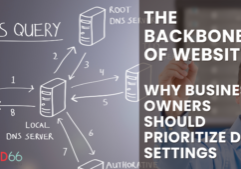9 Actionable Tips to Maximize Your Social Media Presence
First published in CSCNetwork News Publication, 1st Quarter 2024
Social media has become a marketing channel that no business can afford to ignore or use the set-it-and-forget-it approach. With over 4 billion users across major platforms like Facebook, Instagram, Twitter, LinkedIn, and many others, social media offers every business the opportunity to reach, engage, and convert target audiences.
As you can guess, social media moves fast. People are consuming content faster than ever before. Still, many businesses struggle to leverage it effectively. It takes more than just posting—you need a thoughtful, tailored approach optimized for your business goals.
Here are some in-depth tips on maximizing your social media presence:
1. Conduct In-Depth Audience Research
“Sales and Marketing 101” is about knowing your audience; or more importantly, how you solve their problems or take away a certain pain. The foundation of your social media strategy isn’t any different.
When creating or improving your social strategy, dig into the demographics, interests, behaviors, and preferences of your ideal personas on each major platform. Then, create content that they connect with. Write it like you’re talking to a person, not blasting it from a megaphone for all to hear.
Extra tip: Think like a customer when creating your social strategy. It’s not about how you personally use it. Not a fan of Facebook? That’s okay. Not active on LinkedIn? That’s okay, too. But never let this thinking drive your social media plans!
When creating your social media content strategy, keep in mind where your audiences are. LinkedIn skews towards a B2B professional audience, while Instagram leans younger and more consumer-focused. On the other hand, Facebook attracts a wider demographic spread.
This knowledge allows you to shape content, tone, timing, and messaging to what will best resonate with each audience. And remember, since every audience is different, posting the same thing on each channel isn’t effective, either.
2. Define Your Brand Voice and Messaging Strategy
Since we’re talking about maximizing your social media efforts, you’ve likely already established consistent brand voice guidelines. Maintain this voice uniformly across your social channels—this establishes brand authority and recognition.
Is your brand voice fun, entertaining, helpful, professional, or authoritative? Your brand voice should align with your company values and be uniquely yours. Keep in mind that social media also requires authenticity—always incorporate real personalities and voices within your social media efforts.
While some may say social media is a younger person's game, it really is a critical part of your sales and marketing efforts. While younger employees may be savvy with the channels and comfortable with posting, ensuring the voice, messaging, and goals are clear will guide your team toward success.
3. Be Authentic & Real
Seriously, be real. The more relatable your content is and when the company’s personality shines through, the more your audience will connect to your brand. The explosive growth of short-form video via Reels, Stories, and even TikTok, cannot (and should not) be ignored.
If you’re looking to recruit employees, share what makes your company a good place to work. Don’t just use your words or “corporate speak”; share company activities, personal stories, or employee testimonials.
The same can be said when it comes to attracting new customers. Share customer testimonials, reviews, and how you do things differently than competitors.
4. Outline Your Unique Value Proposition
Determine what makes your business, products, or services truly unique to your customers. It’s not just about how long you’ve been in business and that people should trust you. It’s about:
- WHY you’ve been in business for generations
- HOW you’ve invested in technology, employees, and the company
- All to BEST serve your customers
Highlight these strengths in your social content and messaging. Communicate clearly how you solve problems or deliver value better than competitors. This clarity of positioning is key for standing out on social media.
5. Listen Actively and Engage Customers
Social media is a two-way conversation with your audience. Make it a point to respond to comments, questions, and feedback promptly and thoughtfully.
Actively listen for mentions of your brand and relevant keywords. When your company is active, present, and responding as a human, you’re building both brand awareness and brand loyalty.
6. Using AI to Push Creativity
AI is a game changer for marketing teams, as much as automation is for businesses of all types. When marketing is stumped for a creative caption, an email headline, or ad copy, input some ideas and get several ideas at once.
While AI can support creativity and shorten content creation timelines, still be sure to edit for your brand voice and target audiences.
7. Implement Targeted, Paid Advertising
While organic social posting is important, its reach has been declining over the years. Paid social ads allow you to target your audience segments precisely, especially when it comes to LinkedIn advertising. You can target prospects by company, job title, industry, and even within a geographic region of your business.
Before boosting a random post, take time to set clear goals, budgets, and benchmarks for paid ad campaigns. Test different creative placements and optimize for return on ad spend. For instance; if awareness is your goal, then impressions, frequency, and reach are important to you.
If leads are your goal, then conversions (i.e. form submissions, phone calls, etc.) are what you’re after.
Benefits of Paid + Organic Social Media

8. Analyze Performance and Continually Optimize Social Content
What gets measured ultimately gets improved. That’s why you should make time to analyze social media metrics.
Whether you use a social media tool like Hootsuite or Sprout Social to post from, or natively in each channel, they all provide report options. Have your team collect performance data every month on reach, engagement, conversions, sentiment, and link clicks.
Pay attention to what type of posts are driving the engagement you’re after, and ask yourself questions such as:
- Are they clicking on case studies?
- Do they prefer to see products and services?
- Are employee highlights and shoutouts well received?
Then, do more of what works to help you achieve your business goals.
9. Stay Agile and Adapt to What Works For You
Social media platforms and algorithms change constantly. When you’re measuring and monitoring what works (and what doesn’t), you’re able to focus on more of the good stuff. Of course, consumer tastes and trends change often, too. Stay alert and be able to pivot your content accordingly.
The social media landscape provides an incredible opportunity to understand your customers, nurture your brand, and drive real business impact. However, achieving this requires an integrated marketing strategy tailored to your business goals and audience aligned across channels.
Social media marketing is just one channel and should be connected to what your sales team is doing, what your service team is doing, and even what your HR team is doing.
Keep It Simple and Significant
The most important takeaway in maximizing your social media is to be significant to your audiences. Whether you are entertaining, informative, or educational depends on your brand.
It’s time to move past the status quo of who you are and what you do—it’s about why it matters to your audience in that channel, and how you’ll get them to notice you.










